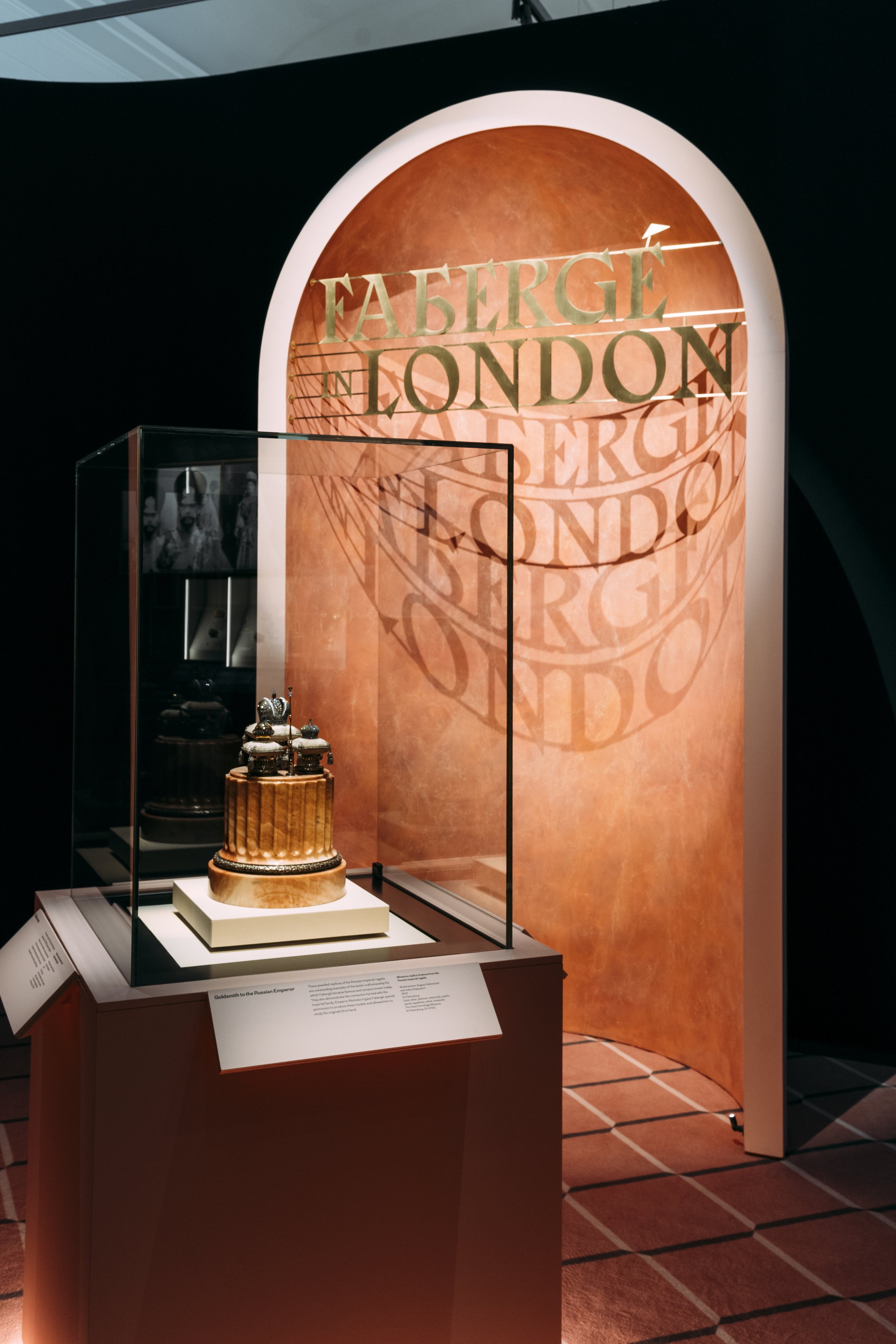Fabergé in London: Romance to Revolution
Surely, I can’t be the only person that mentally links Fabergé to the Grand Duchess Anastasia of Russia? Both share remarkable stories of their reign and downfalls during The Russian War and Revolution and continue to hold global fame over a century later.
After receiving an invitation to the exclusive Press Viewing of the Victoria and Albert Museum’s latest exhibition Fabergé in London: Romance to Revolution, I was aroused with absolute aw as it would be the very first time I have ever seen a real Fabergé piece in person. Fabergé’s fame grew from their opulent Easter Eggs that were gifted and used as social currency amongst society’s elite community at the time including Royalty, aristocrats, American heiresses, exiled Russian Grand Dukes, Maharajas, financiers with newly-made fortunes as symbols of unparalleled luxury. Founded in 1842 in Saint Petersburg Russia, they opened their very first store in London in 1903 where they became as popular in Britain as they were in Russia.
A single Faberge Egg today can be valued up to 33 million pounds. Why so much? Every single egg ever created was completely bespoke and never duplicated, making each one entirely unique. All were made from gold and other precious stones and metals. Only around 50 eggs were ever created and took approximately 1 year for each to be made, making them exceptionally rare.
The rarity of these opulent pieces increased in 1917 when Fabergé promptly halted all production using fine metals and jewels to focus their attention on creating munitions during the Great War and Russian Revolution. Most of the Fabergé eggs, along with masses of Imperial gold, silver, jewels and icons were inventoried, packed in crates and taken to the Kremlin Armory. Leading up to today, we hear the occasional life-changing stories of eggs being found in car boot sales and charity shops with a few still missing.
The exhibition showcased the largest collection of eggs ever shown on display. All 15 are exquisite in their own right, having been lent by various institutions, private collectors and the majority owned by Queen Elizabeth.
The showcase also made me realise the importance of storytelling and the immense affect this can have on the value of an object. Cartier and Fabergé were direct competitors during their early years. Though Cartier as a brand still holds high value, the story associated with Fabergé has made the brand travel to another dimension of luxury and exquisiteness. Comparing Fabergé to the story of Grand Duchess Anastasia of Russia whose family was executed during the war and rumours began to circulate of her supposed survival, she can now be considered to be more famous than her successors as her story is now globally known.
Fabergé in London: Romance to Revolution runs from 20 November 2021 – 8 May2022 and tickets are available at vam.ac.uk.
The curatorial team of Fabergé in London: Romance to Revolution consists of Kieran McCarthy, Joint-Managing Director of Wartski and Hanne Faurby, V&A Exhibition Curator.





